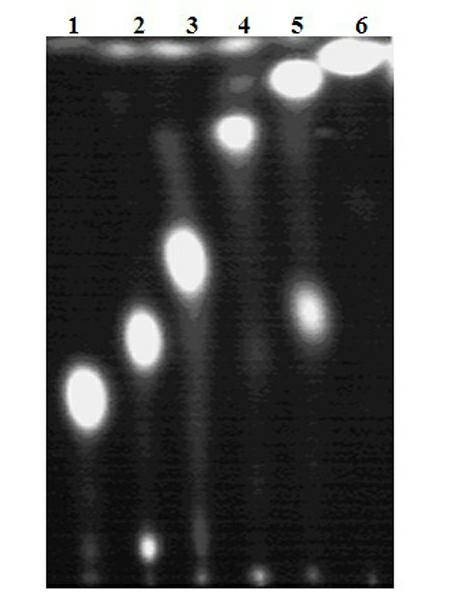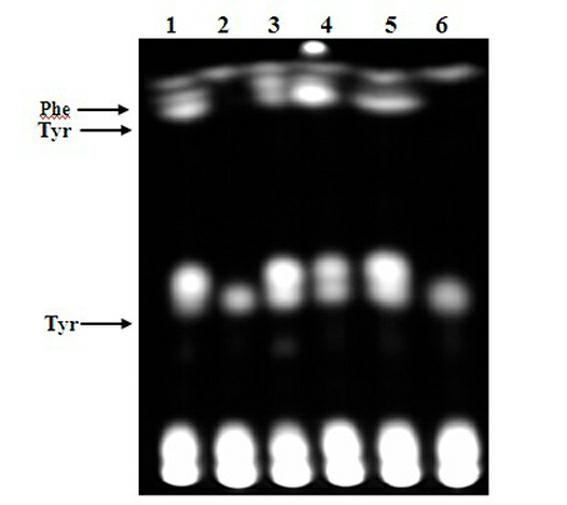A method for detecting amino acid decarboxylase activity of spoilage bacteria in food
A technology of spoilage bacteria and amino acids, applied in measuring devices, material analysis through optical means, instruments, etc., can solve problems such as adverse health effects, product safety hazards, carcinogenic effects, etc., and achieve qualitative detection, low supporting equipment, The effect of accurate qualitative detection
- Summary
- Abstract
- Description
- Claims
- Application Information
AI Technical Summary
Problems solved by technology
Method used
Image
Examples
Embodiment Construction
[0022] Combine below Figure 6 A method for rapidly detecting amino acid decarboxylase activity of spoilage bacteria strains in food proposed by the present invention is described in detail.
[0023] 1. Detection of common aerobic bacteria:
[0024] 1. Accurately weigh 50 mg of each standard substance of tryptamine, 2-phenylethylamine, putrescine, cadaverine, histamine, tyramine, spermidine and spermine, and use 0.4mol / L perchloric acid (HClO 4 ) to 50mL, and made into a 1mg / mL stock solution for later use. Take the above standard stock solutions respectively, and use 0.4mol / L HClO 4 Prepare biogenic amine mixed standard solutions with mass concentrations of 2.5 μg / mL, 5.0 μg / mL, 10.0 μg / mL, 25.0 μg / mL, 50 μg / mL and 100 μg / mL respectively.
[0025] Place the prepared mixed standard solutions of biogenic amines with different concentrations in each centrifuge tube, and add 500 μL of 0.25 mol / L Na in each centrifuge tube 2 HPO 4 , 50μL of 4mol / L NaOH and 1mL of 2.5mg / L dans...
PUM
 Login to View More
Login to View More Abstract
Description
Claims
Application Information
 Login to View More
Login to View More - R&D
- Intellectual Property
- Life Sciences
- Materials
- Tech Scout
- Unparalleled Data Quality
- Higher Quality Content
- 60% Fewer Hallucinations
Browse by: Latest US Patents, China's latest patents, Technical Efficacy Thesaurus, Application Domain, Technology Topic, Popular Technical Reports.
© 2025 PatSnap. All rights reserved.Legal|Privacy policy|Modern Slavery Act Transparency Statement|Sitemap|About US| Contact US: help@patsnap.com



